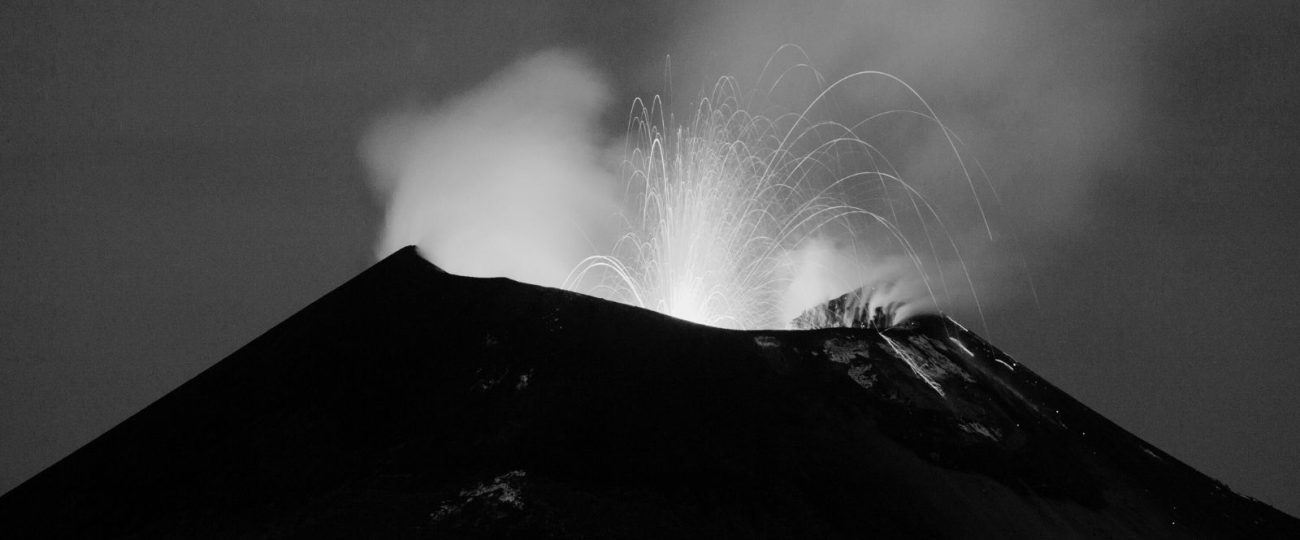What Happened On August 27th?
On August 27, 1883, Krakatoa, an island situated in the Sunda Strait between Java and Sumatra, erupted with an explosive force that became one of the most catastrophic events in recorded history. The series of explosions on that day obliterated much of the island and sent shockwaves that reverberated around the globe. At precisely 10:02 AM, the largest and most devastating explosion tore the island apart, launching a colossal cloud of ash and debris over 20 miles into the sky.
The immense power of this explosion released energy equivalent to 200 megatons of TNT, establishing it as one of the most powerful volcanic events ever recorded. The force of the blast generated massive tsunamis that surged across the surrounding seas, wreaking havoc on the coastlines of Java and Sumatra. The sound of the explosion echoed across the planet, traveling over 3,000 miles and reaching places as distant as Australia and the island of Rodrigues near Mauritius. This sound, which remains one of the loudest events in history, was reported as far as 1,000 miles away, where it was likened to the firing of a cannon.
The tsunamis generated by Krakatoa’s eruption inflicted widespread destruction on the surrounding regions. Waves exceeding 100 feet in height obliterated entire towns and villages along the coastlines, resulting in the deaths of more than 36,000 people. The majority of these fatalities occurred as the tsunamis swept through coastal areas, erasing everything in their path. Ships found themselves flung miles inland by the sheer force of the waves, illustrating the power of the disaster. In Merak, a Dutch warship ended up stranded several kilometers inland.
Krakatoa’s eruption did more than just devastate the landscape; it triggered significant changes in the global climate. The volcano expelled an estimated 11 cubic miles of ash and gases into the atmosphere, which spread worldwide. This massive cloud created vivid sunsets and unusual atmospheric phenomena observed across the globe. The ash particles in the atmosphere scattered sunlight, leading to a “volcanic winter” that lowered global temperatures by about 1.2 degrees Celsius. This cooling effect caused disruptions in agriculture, leading to widespread crop failures and food shortages. The impact on global weather proved so profound that 1884 became known as “the year without a summer” in many parts of the world.
Scientists were quick to seize the opportunity to study Krakatoa’s eruption and its far-reaching effects. They gathered data that advanced the understanding of volcanic activity, weather patterns, and the Earth’s geological processes. Researchers meticulously analyzed the distribution of ash and pumice, which ocean currents carried as far as the eastern coast of Africa, where they washed ashore in vast quantities. The eruption also provided early evidence for the interconnectedness of global climate systems, as volcanic aerosols spread throughout the atmosphere and influenced weather patterns worldwide. Barometric readings from around the world revealed that pressure waves from the eruption circled the Earth multiple times, underscoring the global impact of the event.
Artists and writers worldwide drew inspiration from the event. The dramatic, blood-red sunsets produced by the volcanic ash left an indelible mark on visual art, inspiring works such as Edvard Munch’s The Scream. Poets and authors found in Krakatoa a potent symbol of nature’s raw, uncontrollable power, using the eruption as a metaphor for chaos and destruction. The event also fascinated the public, who marveled at reports of strange weather phenomena, such as blue and green suns, which mystified observers and heightened the sense of awe surrounding the disaster.
The eruption wreaked havoc on the region’s economy, causing severe and long-lasting damage. It destroyed vast tracts of fertile farmland and disrupted key trade routes, leading to significant hardship for the local population. The Dutch colonial government, which controlled the region, faced enormous challenges in rebuilding the devastated infrastructure and providing aid to the survivors. Many communities, permanently displaced by the disaster, found themselves forced to rebuild their lives from the ground up. The eruption also affected global trade, as debris-filled waters and altered landscapes made navigation hazardous, causing a temporary slowdown in regional commerce.
As news of the disaster spread rapidly via telegraph cables, it became one of the first truly global news events. Newspapers around the world reported on the eruption, drawing the attention of readers in distant lands. For many people, this disaster served as their first exposure to the concept of a natural event having such far-reaching consequences.
In the years following the eruption, Krakatoa continued to capture the attention of scientists and the public alike. The once-lush island had been reduced to a barren wasteland, but by 1927, volcanic activity in the area had given rise to a new island, Anak Krakatau, or “Child of Krakatoa.” This new landmass continued to grow and erupt, serving as a living reminder of the immense forces still at work beneath the Earth’s surface. Anak Krakatau’s periodic eruptions demonstrated that the processes that created the original Krakatoa remained active, with the potential to reshape the region once again.





